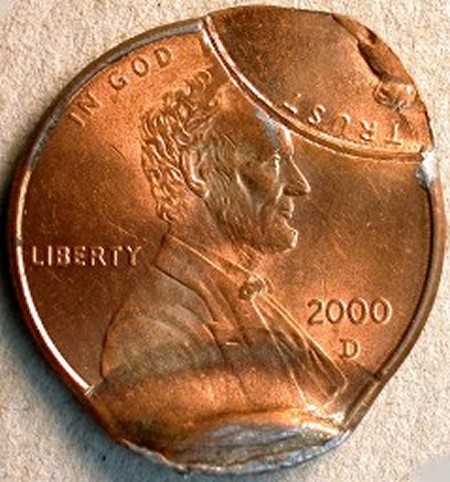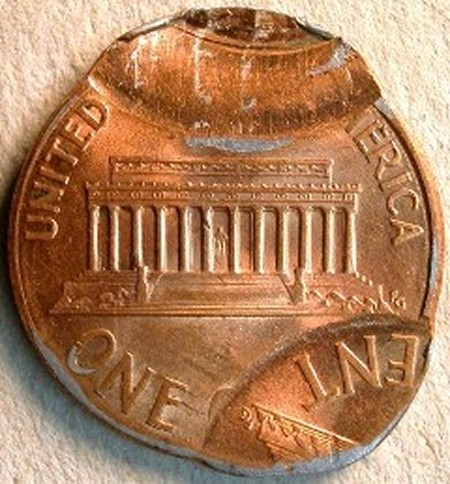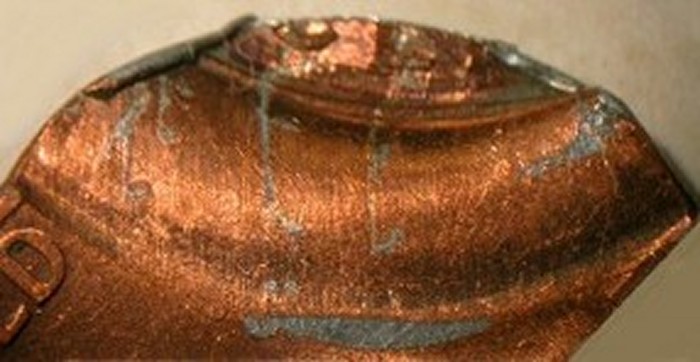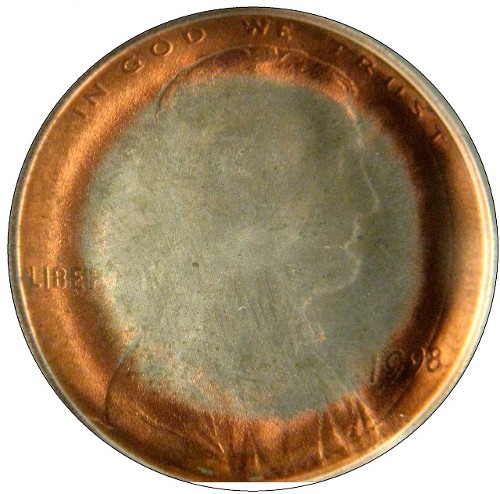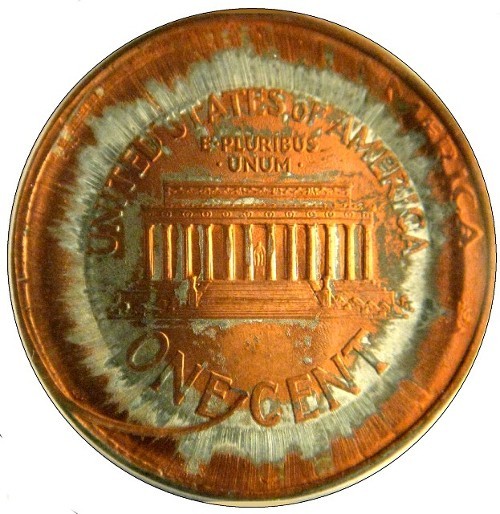The Janvier Reduction Lathe was used to reduce the images that were found on the galvano transferring them onto the master die.
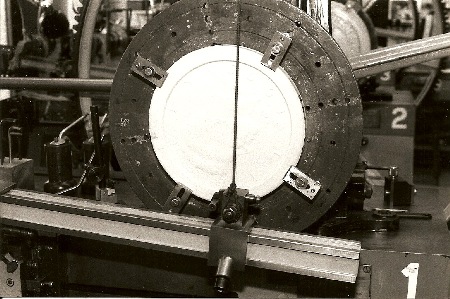
The large white disc at the center of this Janvier Reduction Lathe is a galvano for the 1999-S proof Kennedy half
dollars. The device near the bottom of the galvano is tracing out the design in that area.
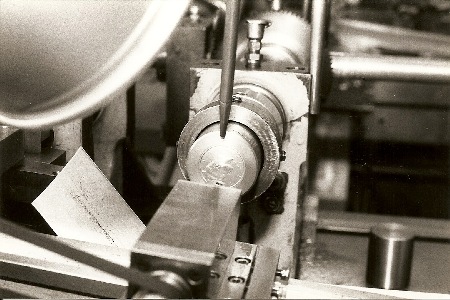
Here we see the Master Hub for the 1999-S proof Kennedy half dollars that is being carved in the same Janvier Reduction Lathe as seen in the previous photo. The device at the bottom of the Master Hub is doing the engraving.
Images and text courtesy of John Wexler. To learn more concerning the Janvier reduction lathe, click HERE
